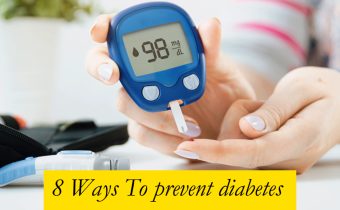Dengue fever, commonly known as break-bone fever, has emerged as a major global health concern since the 1940s. The rise in cases can be attributed to factors such as increased travel, rapid urbanisation, poor sanitation, ineffective mosquito control, and improved disease surveillance. It is now prevalent in tropical regions, with Southeast Asia, the Pacific Islands, and the Middle East being heavily affected. About 40 per cent of the world’s population is at risk, with over one hundred countries reporting endemic cases.
In Nepal, dengue has become a recurring public health problem, with outbreaks occurring during the monsoon and post-monsoon seasons due to favourable mosquito breeding conditions. Efforts by the government and international organisations have been focused on surveillance, prevention, and control measures to combat the disease. However, despite the efforts, it continues to spread across the country.
What is dengue fever?
Dengue fever is a painful viral infection transmitted by Aedes mosquitoes to humans in tropical and subtropical regions. Symptoms include high fever, severe body aches, and, in severe cases, shock and hemorrhagic fever. It affects nearly half of the global population and demands immediate medical attention.

The virus is transmitted through the bite of infected Aedes mosquitoes. Dengue is caused by one of four closely related dengue viruses (DENV-1 to DENV-4) and can lead to severe complications, including internal bleeding. It cannot spread directly from person to person and requires the presence of mosquitoes for transmission.
The trend of dengue in Nepal
Nepal has witnessed multiple dengue outbreaks over the years. In 2022, the country reported a staggering 54,784 dengue cases and 88 deaths, a significant increase from previous years. In 2023, cases have continued to rise, with thousands of infections reported in different provinces.
As of July 24, 2023, a total of 4,289 dengue cases have been identified across 69 districts in Nepal. Koshi province reported the highest number with 2,754 cases, followed by Bagmati province with 667 cases, Gandaki Province with 344 cases, and Sudurpaschim Province with 316 cases.
The top 10 districts account for 85 per cent of all reported cases, with Sunsari having the highest number at 2,542 cases, followed by Dhading (401), Kaski (205), Darchula (190), Kathmandu (80), Sankhuwasabha (64), Myagdi (54), Kanchanpur (52), Rupandehi (45), and Morang (38).
Among the reported cases, three deaths have been confirmed, with one associated with severe dengue shock syndrome and two linked to dengue and other comorbidities.
Symptoms of Dengue Fever
Usually mild or asymptomatic, with recovery in 1-2 weeks for most people.
Symptoms appear 4-10 days after infection and last 2-7 days.
Common symptoms: High fever (40°C/104°F), severe headache, pain behind the eyes, muscle and joint pains, nausea, vomiting, swollen glands, and rash.
Severe symptoms: Severe abdominal pain, persistent vomiting, bleeding gums or nose, fatigue, restlessness, blood in vomit or stool, thirst, pale and cold skin, and weakness.
Warning signs of severe dengue: Severe stomach pain, persistent vomiting, bleeding from gums or nose, blood in urine, stools, or vomit, bleeding under the skin, difficult or rapid breathing, fatigue, irritability, restlessness.
Infants, pregnant women, and those with a previous dengue infection are at higher risk of severe dengue.
Dengue fever can be mistaken for other illnesses, like the flu.
Severe dengue is a medical emergency, requiring immediate care.
A dengue patient at Shukraraj Tropical and Infectious Disease Hospital.
Diagnosing dengue infection involves a variety of blood and imaging tests. If you experience symptoms after being near dengue-infected individuals, inform your doctor for evaluation.
Standard tests include the complete blood count (CBC) to check platelet count and anaemia associated with severe dengue. The dengue serology test detects post-exposure antibodies after four days.
The dengue virus antigen detection (NS1) confirms early infection within 1-2 days of exposure. For severe cases, additional tests like liver function tests (LFT) and renal function tests (RFT) identify dengue’s impact on the liver and kidneys.
The ECG evaluates heart disturbances due to electrolyte imbalances, and the ultrasound abdomen (USG) investigates abdominal conditions like fluid buildup. Chest X-ray identifies pleural and pericardial effusions. Other tests like D-dimer, 2D echocardiography, fibrinogen, and fibrin degradation products (FDP) help assess severe complications and bleeding in dengue hemorrhagic fever.
Preventing and controlling dengue
Dengue is a viral disease transmitted by mosquitoes that are active during the day. Protecting yourself from mosquito bites is crucial to lower the risk of contracting dengue.
Here are some preventive measures:
Wear clothes that cover as much of your body as possible.
Use mosquito nets while sleeping during the day, and consider using nets sprayed with insect repellent for added protection.
Install window screens to keep mosquitoes out of your living spaces.
Apply mosquito repellents containing DEET, Picaridin, or IR3535.
Consider using mosquito coils and vaporisers indoors to repel mosquitoes.
If you do get infected with dengue, it’s important to take the following steps:
Rest and stay hydrated by drinking plenty of liquids.
Use acetaminophen (paracetamol) for pain relief, but avoid non-steroidal anti-inflammatory drugs like ibuprofen and aspirin.
Be vigilant for severe symptoms and promptly contact your doctor if you notice any concerning signs.
Currently, the only approved vaccine for dengue is Dengvaxia, which is effective for individuals with evidence of past dengue infection. However, several other dengue vaccine candidates are undergoing evaluation.
Preventing dengue involves not only protecting yourself but also minimising mosquito breeding grounds. Remove sources of standing water, such as old tires, cans, and flower pots, which are common breeding sites for mosquitoes.
File: Dengue is a mosquito-borne disease. dengue infection
File: Dengue is a mosquito-borne disease.
Treatment of dengue fever
Dengue fever treatment primarily revolves around symptom management and providing supportive care, as there is currently no targeted antiviral therapy for the dengue virus itself. Here are key elements of dengue fever treatment:
Rest and hydrate: Proper rest and adequate fluids are vital for managing dengue fever. Drinking water, oral rehydration solutions, and electrolyte-rich beverages prevent dehydration from fever and sweating.
Reduce fever: Use acetaminophen (paracetamol) for fever relief. Avoid non-steroidal anti-inflammatory drugs (NSAIDs) like ibuprofen, as they may increase bleeding risks in dengue-infected individuals.
Avoid aspirin: Steer clear of aspirin, especially for children and young adults, as it can cause severe Reye’s syndrome affecting the liver and brain.
Monitor symptoms: Keep a close watch on the patient’s condition, especially if the fever persists for more than three days or severe symptoms like continuous vomiting, bleeding, or signs of shock occur.
Hospitalisation: Severe dengue fever cases may need hospitalisation for intravenous fluids and supportive care, especially in severe dengue (hemorrhagic fever or dengue shock syndrome).
Transfusion: Platelet transfusion may be necessary for severe cases with significant bleeding and declining platelet levels to prevent complications.
Manage pain: Use appropriate pain medications to relieve distressing symptoms like severe headaches, muscle, and joint pain.
It is important to remember that there is no specific antiviral medication for treating dengue fever. Hence, the focus of treatment lies in alleviating symptoms and preventing complications. If you suspect you or someone else has dengue fever, seek immediate medical attention, especially if symptoms worsen or become severe.
In conclusion, dengue fever remains a serious global health threat, particularly in tropical regions like Nepal. Effective prevention, early detection, and supportive care are vital in combating its impact on individuals and communities. Continuous efforts by governments, organisations, and individuals are necessary to control and mitigate the spread of this debilitating disease.


















